


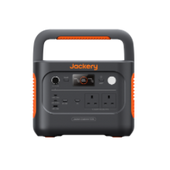


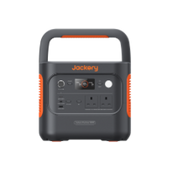


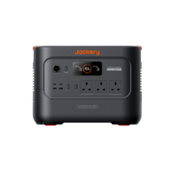


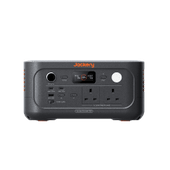


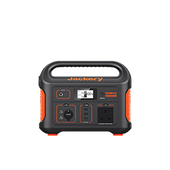





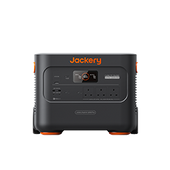


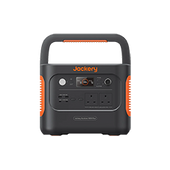


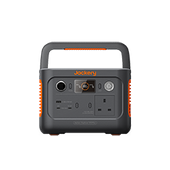





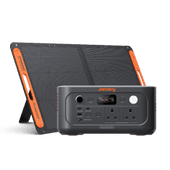


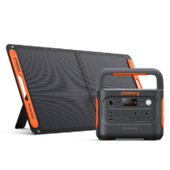


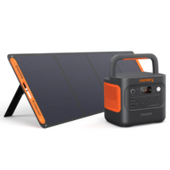


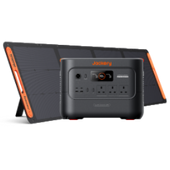


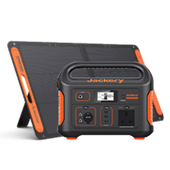


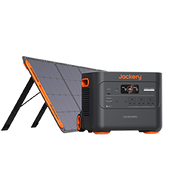


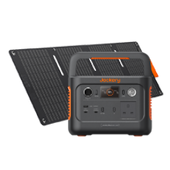


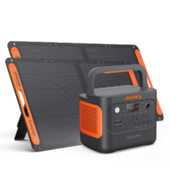


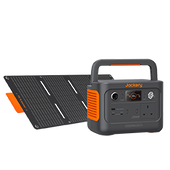


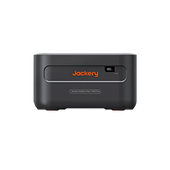
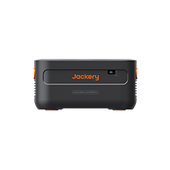
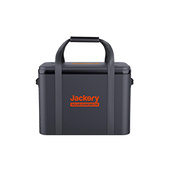


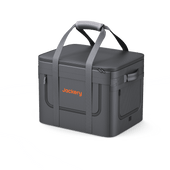


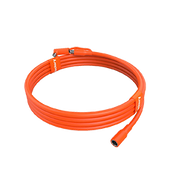





















































Pack Light, Power More
New Arrival - Explorer 300D
288Wh Capacity | 300W Output | LFP Battery








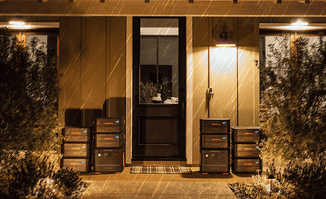









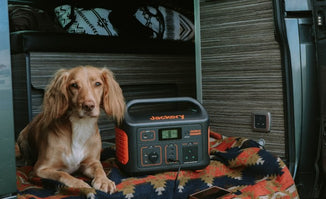















































































Pack Light, Power More
New Arrival - Explorer 300D
288Wh Capacity | 300W Output | LFP Battery








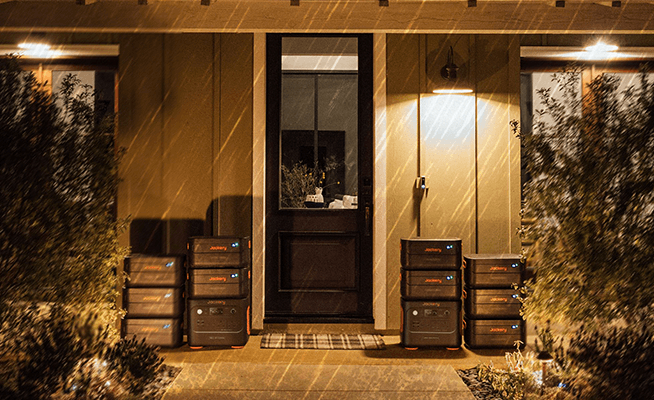









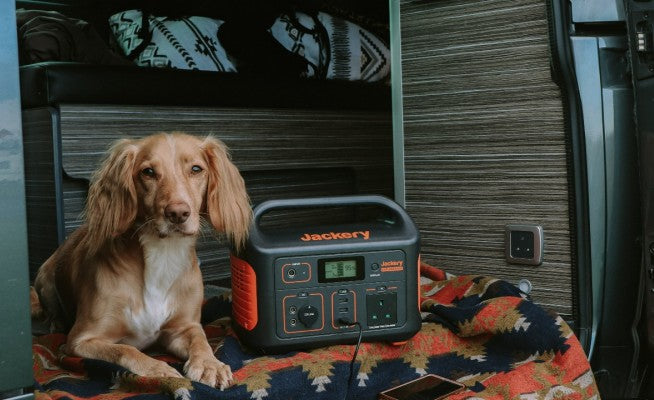
Jon Treby’s mornings begin quietly, not with the hum of a central heating system or the buzz of city electricity, but with the subtle whir of portable batteries being topped up by the summer sun. A mathematics teacher by trade, Jon has spent years teaching equations and logic to secondary school students in the UK. Yet, in his own life, the numbers take on a more tangible quality: the watts drawn from solar panels, the hours of charge in a portable battery, the percentage of energy saved each month.
For Jon, the fascination with solar energy began not out of necessity, but curiosity. “I’ve always had an interest in solar,” he says, recalling the early days of experimenting with small panels and portable devices. The idea was simple: why rely solely on grid electricity when technology offered a way to harness the sun?
Jon’s journey into portable solar began modestly. The first Jackery he purchased was the Explorer 240, paired with an extra light SolarSaga 40W panel. Today, his setup has grown to include two panels on his camper van and a panel on his shed, expanding his ability to generate and store power. He started small, using it to charge his laptop, phones, and other everyday electronics. “It’s just amazing – power to everything I need,” he notes, a mixture of surprise and satisfaction in his voice.
The Explorer 240 was a trial run, a taste of independence. Plugged into the sun, it allowed Jon to measure, experiment, and quantify energy in a way that appealed to both his teaching instincts and his personal ethics. It was also practical. Rather than using power from the national grid, he could power his devices sustainably, a lesson he carried into his classroom. In assemblies, he would demonstrate alternative energy solutions, showing students that sustainable practices weren’t just theory—they could be lived, tested, and measured.
The hobby grew into something more ambitious. Jon added a larger Explorer 1000 v2 to his setup, capable of powering heavier appliances like a portable Hoover or a camper van fridge. He also installed a solar panel on his shed, creating a small but reliable ecosystem of energy production. Rainy days in the UK posed challenges, yet the system’s simplicity and adaptability made the occasional dip in solar output a manageable problem.
“It simplifies it,” Jon says of the Jackery system. “It just makes it easy to not have to rely on main electricity.” In practice, this meant that even during 3 recent power outages, when much of the neighbourhood went dark, Jon’s home remained lit and functional. For many, these outages meant candles on the dinner table and waiting in the dark for the grid to return back to life.
But inside Jon’s home, the lights flickered on again almost instantly. A Jackery Explorer sat ready on the counter, cables already coiled in their familiar places. His children could continue scrolling on their tablets, homework could be finished on a charged laptop. There was no panic. What might have been a disruption became, in Jon’s words, “barely noticeable.” The Jackery units, paired with his modest solar setup, acted less like a backup plan and throughout time became an essential to the household. This network of portable power has embedded itself into his routine—charging overnight, topping up during daylight, and waiting patiently for the next time it’s needed.
“It’s like having this quiet safety net,” Jon says. “You don’t think about it most days, but when everything else goes down, you realize how much it’s holding you together.”
For Jon, portable power was more than a stationary convenience—it was also a companion on the road. His camper van, outfitted with a solar panel, became a test for energy use. The fridge, kettle, and lights were all powered sustainably, allowing him to explore without the constant worry of running out of power.
A particular moment stands out in his memory: the first time he used the Explorer 1000 v2 to run the van’s fridge on a summer trip to France. Accidentally, having adjusted the fridge settings too low, overnight, the milk froze. By the end of the journey, the Jackery still held its charge at full capacity, demonstrating the potential of portable solar in a real-world scenario. “I was blown away by the actual kind of potential power,” he recalls. “It was hugely impressive.”
The Jackery is woven into the fabric of Jon’s life. The Explorer 240 serves as a portable work companion, powering devices in different rooms or while on the move. The Explorer 1000 v2 handles heavier tasks at home and on road trips. Even the smallest Jackery 100 Plus, provides enough energy to charge a phone overnight.
Jon’s approach to solar energy is grounded in the logic of a mathematician. He tracks energy output, calculates the savings on his electric bill, and measures the efficiency of each unit. Over the course of a year, he estimates that his combination of Jackery units and solar panels reduced his electricity costs by around 10 percent—a tangible, measurable impact that reinforces his commitment to sustainable living.
Jon brings this into his teaching at school. By demonstrating the real-world applications of renewable energy, Jon inspires students to think critically about sustainability. He shows them that energy is not just an abstract concept on a board, but a quantifiable resource that can be harnessed, shared, and saved.
For Jon, the Jackery represents freedom— to explore, to experiment, and to live intentionally. It is, in many ways, an expression of his values. “It’s like the name says—Explorer,” he reflects. “It has that sense of going out and being anywhere with power.”
A Solar-Powered Life, Shared Beyond the Classroom
Jon’s lifestyle choices extend beyond convenience; they serve as a model for his students. By integrating sustainable practices into his personal and professional life, he demonstrates the relevance of renewable energy in everyday contexts. Solar panels at school, hands-on demonstrations, and personal stories all reinforce the message: technology, when used thoughtfully, can be a tool for empowerment and education.
Students respond with curiosity and engagement. When Jon brings solar panels into the classroom, questions flow quickly: “What’s that? How does it work?” These moments spark conversation and imagination, encouraging students to envision a future where sustainable practices are the norm rather than the exception.
Despite years of experimentation and adoption, Jon sees his journey with solar energy as ongoing. He envisions larger Jackery units to power more of his home’s appliances, from refrigerators to tumble dryers, further reducing dependence on the grid. He also looks forward to extended road trips, where portable energy will allow him to venture farther while maintaining the comforts of home.
In Jon’s world, electricity is no longer just a commodity; it is a companion. The Jackery units hum quietly in the background, catching the sunlight, feeding the rhythm of his days. They light his home when the neighbourhood goes dark, keep the camper van alive on long summer drives, and spark wonder in the classroom when students lean in to watch a solar panel at work.
Jon says that at the end of the day, it’s about small, consistent habits that add up to real results: lower bills, fewer disruptions during outages, and most importantly peace in knowing that he has a reliable source of power wherever he needs it.
£0.00
More